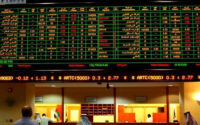’Dubai Economic Outlook’ Shows Openness And Diversification To Boost Growth In 2018 And Beyond
Diversification and the high degree of openness in Dubai along with the positive impact of global trends will boost economic growth in the emirate in 2018 and beyond, according to the ‘Dubai Economic Outlook’ report released on the sidelines of the ‘UAE Economic Outlook’ forum, which concluded today in Abu Dhabi. The report says that Dubai will achieve 3.5% growth in 2018, also drawing on the continued recovery in global trade and the highest growth rates in most developed economies.
The report reviews the major macro and sectoral levels developments in Dubai in 2016 and 2017, and points to the prospects for 2018 in the context of foreign direct investment, Expo 2020 and other transformational initiatives aimed at the sustainable development of the emirate in the medium term as well as regional and global trends. Macroeconomic factors such as GDP per capita, fiscal and monetary policy as well as developments in the wholesale, retail, banking, transport & storage, real estate & construction, manufacturing and hospitality sectors are captured in the report.
In terms of openness, Dubai ranks third in the world after Luxembourg and Hong Kong, with a high degree of dependence on foreign trade for income. Dubai’s openness ratio was 321% in 2016, meaning that trade flows were more than three times higher than the net value added in the economy. The total value of Dubai’s trade in non-oil goods was AED 1.28 trillion in 2016, but its trade balance has been characterised by a permanent deficit as Dubai is a global hub for global and regional trade. Dubai’s imports are much more than its total exports as most imports are transported to other emirates and to neighbouring countries without them being registered as re-exports. Dubai’s unique geographic location as a link between Asia and Europe, as well as its excellent cargo and air transport links and free zones, make it an attractive location for international companies to participate in global value chains (GVCs).








 Email: info@cyber-gear.com
Email: info@cyber-gear.com